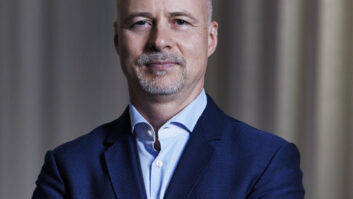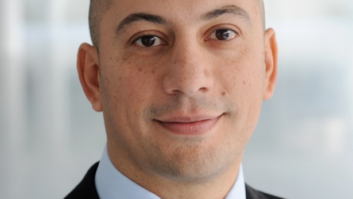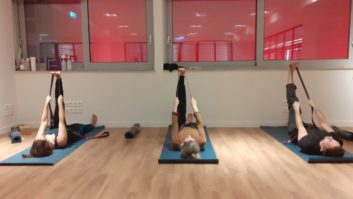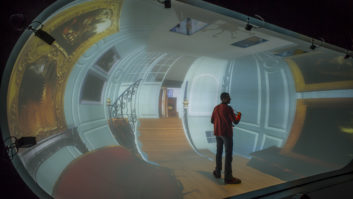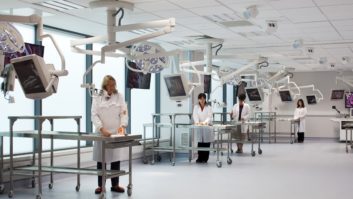System integrators have always been known for their radical, entrepreneurial and adventurous approach to work; it’s what makes good integrators stand out from the crowd. In so doing, they will actively seek out jobs with a challenging nature and look beyond their comfort zone. One way this manifests itself is in the readiness of established integrators to find and win projects abroad; throughout Europe and further afield.
Factors driving this determination are not usually just a desire to chase the sun (although it can’t be ruled out) but more commercial. Even before times got tough, there were many integrators spread around the world beyond their own national boundaries.
The question is: how easy is it to set up abroad and win contracts, and what should be considered before accepting complex contracts? The corollary of this is how do manufacturers deal with installers and users of their products across borders: what support is required in various countries in order to sell there and how can standard solutions be developed that are as familiar to an integrator in one country as another?
There are two distinct approaches to working multinationally: either to go it alone and simply decamp to a foreign land, with a view to winning business and carrying out the work locally; or to team up with other, local integrators and work with them, in essence benefiting from each other’s local knowledge and facilities to present a united, often worldwide support network.
One of the driving factors in developing a multinational approach is the enhanced ability to service global organisations.
Hewshott International is a leading global AV consultancy headquartered in the UK with offices in Singapore and Hong Kong. The company is currently working on a number of projects throughout Europe and the Far East.
Peter Hunt, group CEO, is soon to relocate to Hewshott’s Asia-Pacific regional HQ in Singapore in a strategic move to service the ever-expanding business in the wider region. The company’s clients include many leading international corporations, including a respectable number of the Fortune 500: global banks, investment and insurance companies, business in the legal and education sectors, and more recently large European Union agencies.
Hunt says: “International organisations operating globally benefit from facilities that are the same in New York, London, Singapore and Sydney so their staff can move between the offices and use equipment without having to re-familiarise themselves with different systems in different countries. Where possible, we design systems that can be installed in all geographic regions by local system integrators while providing consistency to the end user, irrespective of what happens under the surface. Local integration standards vary wildly from country to country, even within the same region, and by proactively managing projects to ensure a consistent specification is met, we work with our clients to provide truly global corporate standards in terms of quality and appearance, ensuring that the highest level of service is achieved.”
Another consultancy, Visual Acuity, works on behalf of end clients, developing tenders prior to bidding and then often providing project management during execution. Blair Parkin, managing director, explains the current situation: “We work on more projects outside the UK than in and come across a plethora of issues between integrators and the end user, for which we act as an interface and mediator. Typical issues are the interpretation of local regulations, such as the need for seismic protection in California; local language requirements, for which the region’s university is often a good resource available to foreign work teams; and time differences and cultures, for example in Saudi Arabia where the working week overlaps the UK by only three days, so we need to adjust to provide backup and support operations to be available for real-time discussions.”
Other factors have facilitated the growth and success of cross-border operations, according to Blair, these include “low-cost airlines, which started our business going, virtual networking and meeting systems such as Netmeeting, Buzzsaw (from Autodesk) Skype and Basecamp”.
Small world
Corporate globalisation is another aspect of business that provides opportunities for cross-border working. PAI Group has historically designed and built for several large American organisations, such as Warner Brothers and Hard Rock Cafe as they expand across the globe installing similar AV systems in branches in many countries.
Paul Adams, managing director, says: “Organisations expanding outside the US often contract with local suppliers who can fully understand and source equipment that is compatible in that locality, rather than export it from the US. The most obvious reasons for this are the change in voltage in Europe and the different standards, not just the cost of shipping. We have installed on their behalf, with the main contractual and commercial agreements held in the UK with the parent company. In these installations we find that it is always most efficient to source and build all equipment racks here, with full configuration and testing prior to shipment to site.”
With the high reliability of products these days it is safe to do this, even for large items such as plasma screens, and risk having to support them from a UK base, rather than purchasing and offering support locally. Even though manufacturers should support product purchased and used in different countries it is sometimes not simple to arrange a warranty or other repairs without returning the item to base. One area that can cause problems is the selection and installation of cabling and electrical switchgear, which are often better sourced locally.
Adams adds: “We normally use our own installation teams but acquire materials in the country in which they are to be used. This is because Certificates of Conformity differ and cables may not be recognised across borders. We had an instance where several kilometres of perfectly good and safe cable had to be replaced because the authorities in that region did not accept the certification.”
It is not just large, established companies that operate in this way; smaller, highly specialised integrators will often take on jobs abroad. Mark Buckfield, MD of Creative Home Cinema, recalls: “We were asked by one UK-based client to install a home entertainment system in his France home. This was primarily because of our existing relationship and the fact that we already understood his requirements and preferences. We purchased, tested and built modules in the UK before shipping them to France, rather than source product there, largely because of the time needed to develop new sales contacts and achieve margins. This was despite the fact that we would need to provide continued operational support and return-to-base repair procedures. It is necessary to be highly organised and to document and draw up detailed plans prior to undertaking the work. Fortunately many of the systems used, such as the Crestron controller and Kaleidescape servers, are network accessible and can be monitored and controlled over the internet from home.”
One of the major issues faced by Buckfield’s team was the interaction with local contractors, such as electricians with the requisite certification. This was not so much to do with the language barrier as with local customs, including working pace and approach to timekeeping.
Collaborative efforts
The AV Global Alliance set up by AVMachines roughly one year ago is a typical example of pan-geographic collaboration. Now with 14 members, which have combined group sales of over $1billion, the alliance forms an amorphous community with criss-crossing of support between individuals, rather than a formally controlled structure.
Sandy MacPherson, chairman of AVMachines, says: “The AV Global Alliance is a partnership of leading videoconferencing and audiovisual system integrators who have the ability to provide complex solutions, and who can offer mutual support to multinational clients such as Fidelity, Northern Trust and Pinsent Masons. Typically, members of the alliance are the leading system integrator in their own country or region. All members report increased sales because of their membership. It is AVM’s intention to appoint additional partners who are leaders in their own territories to ensure global coverage for sales and service of both audiovisual and videoconferencing solutions to global organisations.”
One avenue that MacPherson is keen to explore is the development and promotion of members’ own solutions across the alliance, for example: “Our newest member, Barkai, Benny Brookstein in Israel, has developed a solution for AV systems in operating theatres and is able to offer that through other members in other countries.”
The fast-approaching ISE 2009 show will be a good opportunity for manufacturers and distributors to meet and develop working relationships for global expansion. Mike Blackman, managing director of show organiser Integrated Systems Events, comments: “The show has rapidly grown into a global event in which 500 mainly manufacturing exhibitors from over 30 countries will present their products to attendees from around 100 countries. Clearly manufacturers are addressing multiple markets, although they do so with different approaches: some open regional offices, while others prefer to run several countries from one place. It depends greatly on the language characteristics and acceptance or capabilities in regional areas.”
Manufacturers’ approaches to multinational teams varies. Parkin has come across various attitudes: “In this type of operation, installers rely on good information provision from a corporate headquarters at the specification stage, followed by local sales and support when they are ready to purchase. All too often manufacturers simply identify the target location and immediately divert the enquiry there. This is not helpful when the remote designer is trying to specify an installation in another locale and needs a great deal of initial support in their own technical language.”
Many of the large specialist manufacturers have a highly flexible strategy and approach to sales and support. One of these is Barco, which supplies display, control room and lighting equipment to all types of user.
Els Van Loocke, global marketing manager, explains the company’s philosophy: “We have moved from an approach where products were designed for a specific installation to one where they are more common and able to be supported by our network of global system integrator partners into local environments. Typically there are two cross-border models: the integrator will receive and configure product in his home country prior to shipment to a foreign site, or they will specify it for us to ship there in preparation for installation. It depends on how much integration is required on a case-by-case basis. Either way, we provide strong technical and service support. This is usually done by first contact with one of our local customer support engineers or direct telephone through a centralised service centre in Belgium.
“Any equipment return or repair is then also through the centre in Belgium. This means that we can provide a high level of local support no matter where the integrator or installation is, using our own local staff, on a global scale.”
Mitsubishi Electric, a major global supplier, has the same pro-user attitude. David Jones, business manager, Mitsubishi Display Engineering, explains: “Over 90% of sales is through integrators and channel partners and it is important that if the product has our name on it, it is supported well, even when sold and used across borders. We deal with regional support on a case-by-case basis, generally delivering through local suppliers where possible. Where extra support is necessary, we’ll deal with any problems ourselves so that we present a united front to the customer.”
Extron is another manufacturer that delivers a wide variety of product across the globe. The company’s EMEA vice president of marketing, Rainer Stiehl, says: “Extron has the ability to support customers all over the world through offices in all regions that are central hubs designed to carry out all delivery and support. It is based on providing the best possible service, support and solutions to all our customers, including multinational accounts.”
Similarly, Japan-based audio manufacturer TOA operates a global resource network – as evidenced very strongly by the company supplying its PA equipment to 21 venues at the 2008 Beijing Olympics, including the iconic Bird’s Nest stadium. Describing its European operation, sales director Brett Downing explains: “We operate a centralised sales, marketing and support team across the whole of Europe with local supply and delivery through strategic main offices and partners in all countries. Of particular relevance is the coming EN 54 fire and security classification, which will be mandatory in two years and applies throughout the EU. A centralised office assists in the understanding and application of products to meet this standard.”
While many manufacturers in this market are large corporate organisations, each with their own sales and support offices in every country in which they operate, smaller manufacturers need to consider carefully how they approach and deal with customers across the world.
Anders Lokke, international marketing and communications manager of Norway-based projector manufacturer projectiondesign, says: “Unlike large corporations, we so far only support a small number of regional offices in key locations such as Singapore, the US and countries in Europe. It is important for us to provide local support, and while cross-border sales cannot be rejected under European law, we find that the benefit of local support far outweighs the saving of a few euros when customers shop around, so integrators tend to buy in their home territory. Typically system solutions are assembled in one country and shipped to others by integrators, in which case we offer local support for our products. In some cases, for example where US integrators are working in Europe, they may buy at their normal negotiated price but receive product in the final country.”
Single market
With the commonality of laws and conformance of equipment across Europe, the manufacture of products that comply with local jurisdiction is not so much of an issue. Beyond that, it is possible to meet global requirements by complying with other well-known standards, so that adherence and certification to CE, UL, TUV and FCC meets the legal compliance of most countries.
Henry Corrado, director of the European office of Alcorn McBride, a manufacturer of show control equipment for themed environments, explains: “With European Union regulations in force, certification and compliance for each country is not such an issue these days. We comply with the main standards of safety and environmental considerations and are careful who our suppliers are and the way that they also comply, so that making products for worldwide use is straightforward.”
Cultural differences are cited as important in this type of multinational environment, as too are support issues, for which Alcorn has a similar model to Barco. “We have designers and support staff from many countries and centralise sales and support activities from our head office in Paris. This allows us to incorporate regional influences into our range. The themed entertainment industry is, by its nature, multicultural. Of far more importance is the ability to provide rapid support and service; our installations in themed entertainment applications demand continuous operation, and extended downtimes are not welcomed. We provide technical support, followed by rapid shipment of replacement parts where necessary from Paris, in many cases these can be delivered faster than a local distributor could manage.”
Clearly there are different models and ways of working for both integrators and suppliers. What is apparent is that obstacles to cross-border operation are falling, making it far easier for integrators to operate abroad and to receive and support product from all manufacturers, whether or not they secure this at home or in the final country of installation. From the manufacturers’ point of view, it is crucial that they operate the best model for their product range and type of customer which is, in essence, a decision they need to make based on their strategic objectives.
